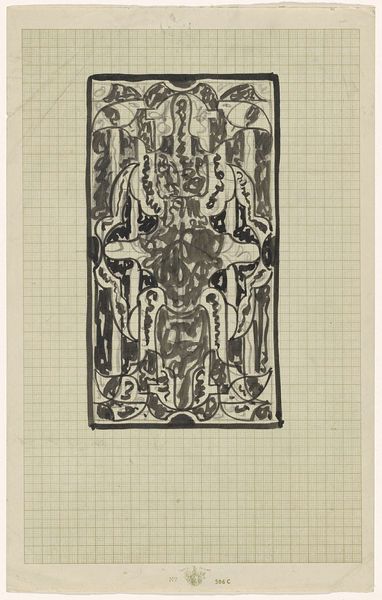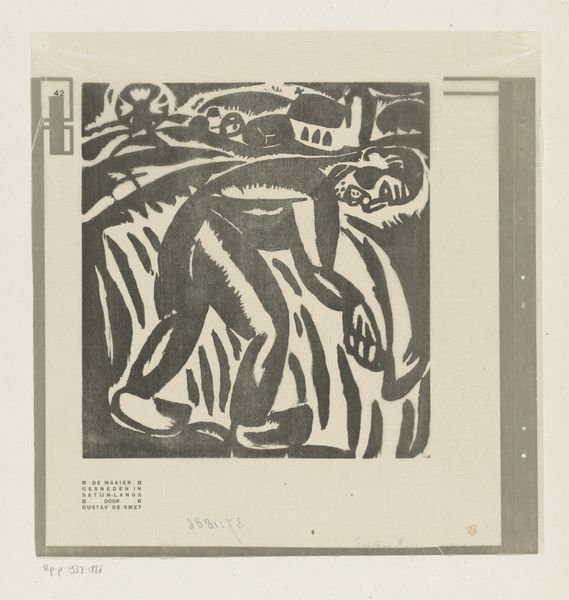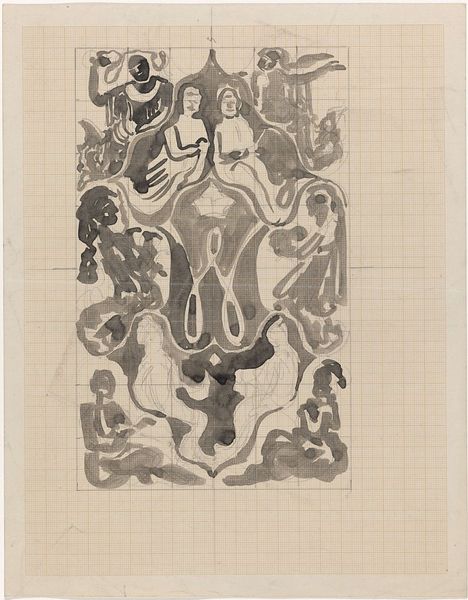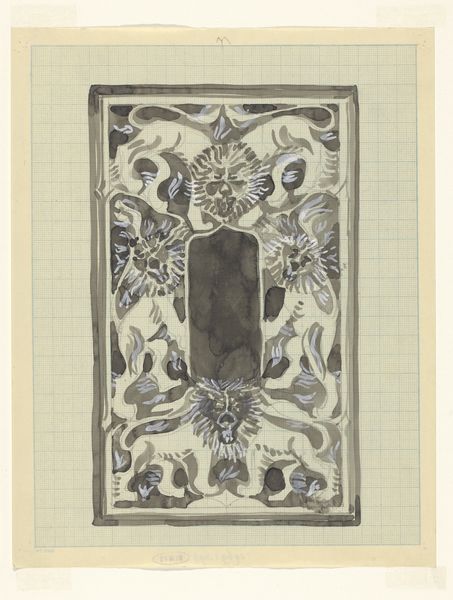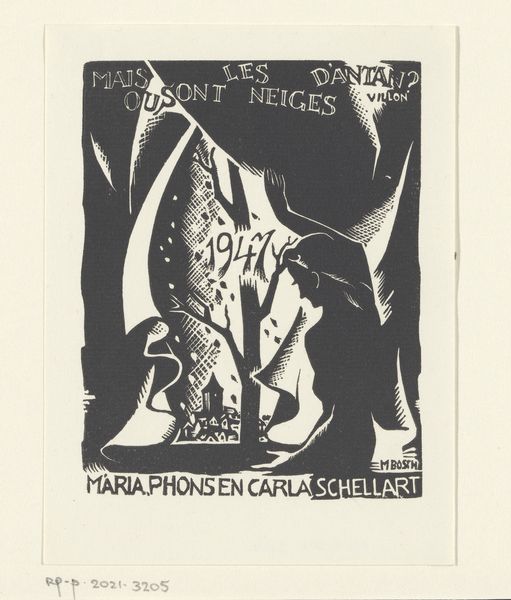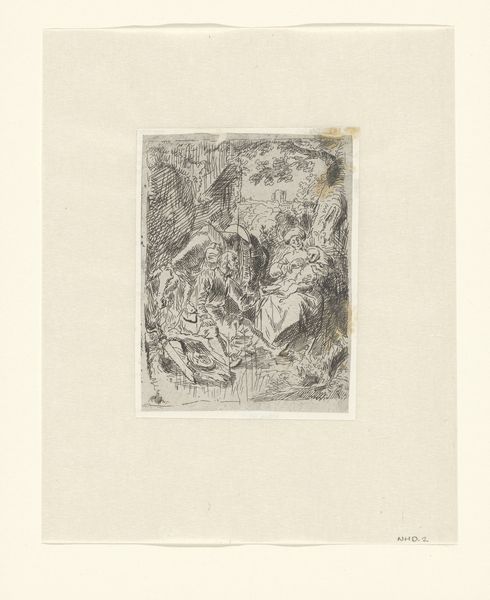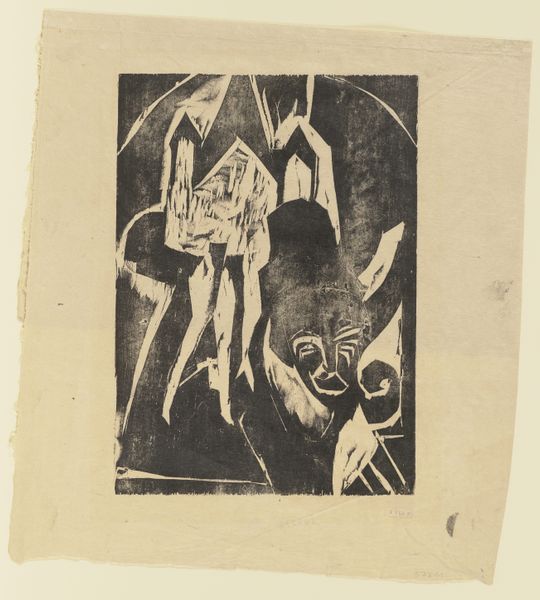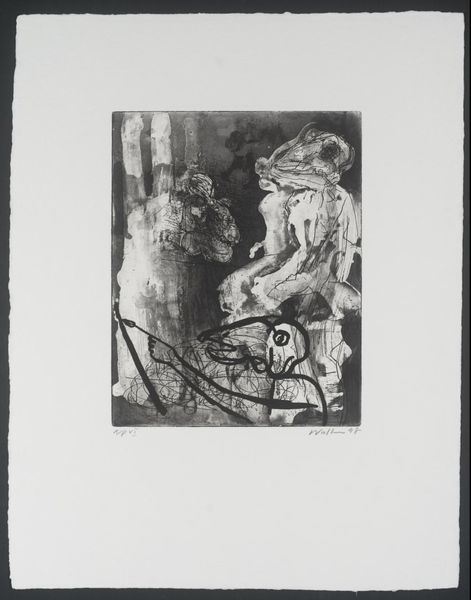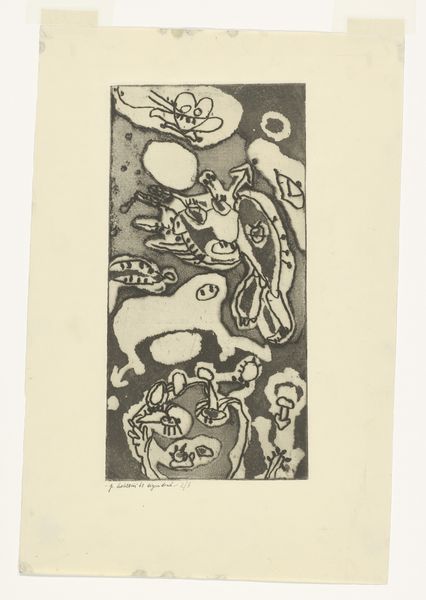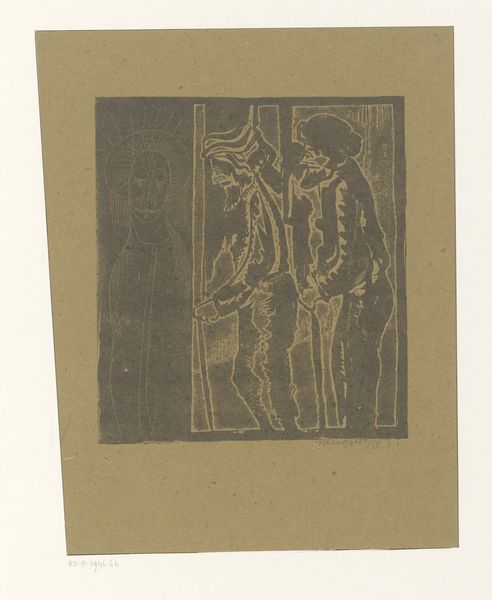
drawing, lithography, print, woodcut
#
17_20th-century
#
drawing
#
lithography
#
narrative-art
# print
#
german-expressionism
#
figuration
#
expressionism
#
woodcut
Copyright: Public Domain
This is the cover of the woodcut series “Schlemihl” by Ernst Ludwig Kirchner. Here, the crowd of figures, with their grotesque and mask-like faces, evoke the symbol of the restless soul, adrift in a world of shifting values, much like figures in expressionist art. Now, consider the raised hands. This gesture has roots stretching back to ancient rituals, a plea to the heavens, a sign of distress, or even the raised hands of grief. This primal expression reemerges throughout art history. Think of the ecstatic gestures in religious art, the desperate cries in scenes of suffering, the need for help and guidance, all ingrained in our collective consciousness. These collective memories resonate with the viewer on a subconscious level. The faces evoke anxiety; their raised hands echo universal feelings of helplessness. Ultimately, Kirchner does not just illustrate a story, but channels the emotional and psychological turmoil, the burden of alienation, fear, and isolation. These themes resurface throughout the ages.
Comments
stadelmuseum about 2 years ago
⋮
During World War I, Kirchner came to regard the fairy-tale like story “Peter Schlemihls wundersame Geschichte” (“Peter Schlemihl’s Miraculous Story”;1813) by Adelbert von Chamisso (1781–1838) as a parable of his own loss of identity. He executed the “Schlemihl” cycle – his boldly autobiographical interpretation of the tale – the same year he was released from the military. The deeply self-reflective nature of the series may account for the fact that he printed only five complete copies of it and distributed them exclusively to close friends.Kirchner’s “Peter Schlemihl” cycle is one of the masterworks of Expressionism. As was the case with “Cocotte on the Street” (Städel Museum, inv. no. 65598), the artist printed the six sheets from two wooden blocks each, in part sawn in pieces and usually coloured with a brush in the manner of a monotype. Closely mirroring the contents of the story, the colour zones depart more and more from the outlines of the drawing block until the composition is composed entirely of colour. In the last print, the shadow has a shape more solid than that of Schlemihl, who has begun to dissolve.In Chamisso’s tale, Schlemihl exchanges his shadow for inexhaustible wealth, but as a result becomes an outsider to society. Kirchner read the tale as that of a “persecution paranoiac” who sells his “innermost attribute”, his shadow. He falls in love, but his love remains unfulfilled and he is moreover ostracized from society. On a country road, Schlemihl encounters the little grey man to whom he has once sold his shadow, but the transaction can no longer be undone. Downcast, Schlemihl wanders the countryside and unexpectedly meets his shadow, but does not succeed in fixing it to his soles again. In the end, Chamisso has his protagonist roaming the world in seven-league boots – a conciliatory motif Kirchner was incapable of visualizing.
Join the conversation
Join millions of artists and users on Artera today and experience the ultimate creative platform.



